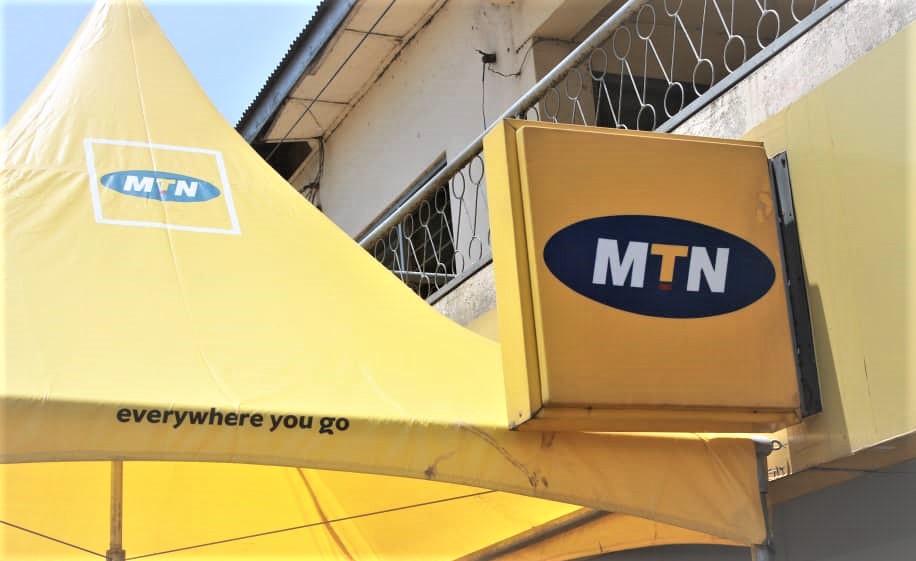

This report provides a comparative analysis of corporate performance in Nigeria and Ghana during the first half of 2025, focusing on four multinational entities operating across both markets: MTN, MultiChoice (DStv), Ecobank Transnational Incorporated, and Nestlé.
The analysis is contextualized by the divergent macroeconomic trajectories of the two nations—Nigeria’s fragile, managed stabilization versus Ghana’s robust, confidence-driven recovery. By examining key financial and operational metrics, the report illustrates how these differing economic environments directly influenced corporate profitability, strategic priorities, and regulatory interactions.
The findings reveal that while macroeconomic stability was the primary determinant of financial turnarounds, particularly in Nigeria, factors such as business model resilience, operational efficiency, and consumer purchasing power were critical differentiators of performance. The report concludes with a synthesis of cross-sectoral themes and provides a strategic outlook, highlighting the nuanced interplay between corporate strategy and economic policy in West Africa.
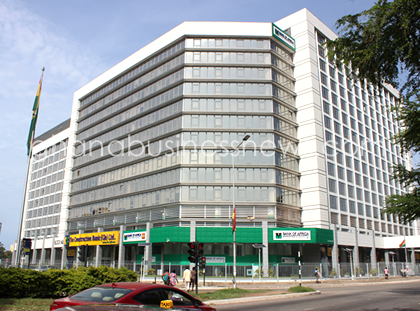 1.0 The divergent paths to stability: Macroeconomic landscapes of Nigeria and Ghana
1.0 The divergent paths to stability: Macroeconomic landscapes of Nigeria and Ghana
The first half of 2025 told a tale of two very different economic journeys for West Africa’s largest English-speaking nations. Both Nigeria and Ghana were on a path toward greater stability after a period of intense volatility, but the nature and quality of their recoveries created profoundly different operating environments for multinational corporations. Nigeria navigated a fragile, hard-won stabilization, successfully halting a currency freefall but leaving behind a legacy of high inflation and a severely strained consumer. In contrast, Ghana experienced a more robust and confident recovery, where fiscal discipline translated into tangible benefits, including a strengthening currency, rapidly slowing inflation, and a resurgent consumer base. This divergence in economic fortunes is the essential backdrop for understanding the varied corporate performances of H1 2025, as it directly shaped everything from revenue growth and profitability to regulatory pressures and strategic priorities.
1.1 Nigeria’s rebound: A story of fragile stability
After the tumultuous economic conditions of 2023 and 2024, marked by a steep devaluation of the Naira and hyperinflationary pressures, the first half of 2025 in Nigeria was a period of managed stabilization. The primary achievement of policymakers was containing the foreign exchange crisis that had previously crippled corporate balance sheets. Through a series of decisive interventions, including the injection of approximately $4.1 billion into the market, the Central Bank of Nigeria (CBN) successfully anchored the Naira (Agusto & Co., 2025; Proshare, 2025a). The currency settled into a relatively predictable trading range of ?1,550–?1,635 to the US dollar, a welcome relief for businesses that had found financial planning nearly impossible (Agusto & Co., 2025).
However, this stability did not immediately translate into broad-based economic relief. To defend the currency and combat inflation, the CBN maintained a hawkish monetary policy, holding its key interest rate at a high of 27.5% throughout the period (Trading Economics, 2025a; BusinessDay, 2025a). While this policy helped attract investment and manage inflation expectations, it also kept borrowing costs elevated for businesses and consumers.
 Inflationary pressures, though moderating, remained a significant challenge. The headline rate eased from 24.48% in January to 22.22% by June, with an average of 23.5% for the half (Agusto & Co., 2025; Trading Economics, 2025b; Investing.com, 2025a). This persistent inflation meant that the real incomes and purchasing power of Nigerian households remained severely eroded. Consumers were forced to prioritize essential goods, demonstrating extreme price sensitivity and a shift towards what analysts termed “intentional” consumption—a focus on smaller, affordable product sizes and value over brand loyalty (BusinessDay, 2025b; Storyblok, 2025). The overall narrative for H1 2025 was one of a fragile recovery. The government had pulled the economy back from the brink, but the environment remained challenging, defined by high costs, tight credit, and a consumer base still reeling from the recent economic shock.
Inflationary pressures, though moderating, remained a significant challenge. The headline rate eased from 24.48% in January to 22.22% by June, with an average of 23.5% for the half (Agusto & Co., 2025; Trading Economics, 2025b; Investing.com, 2025a). This persistent inflation meant that the real incomes and purchasing power of Nigerian households remained severely eroded. Consumers were forced to prioritize essential goods, demonstrating extreme price sensitivity and a shift towards what analysts termed “intentional” consumption—a focus on smaller, affordable product sizes and value over brand loyalty (BusinessDay, 2025b; Storyblok, 2025). The overall narrative for H1 2025 was one of a fragile recovery. The government had pulled the economy back from the brink, but the environment remained challenging, defined by high costs, tight credit, and a consumer base still reeling from the recent economic shock.
1.2 Ghana’s recovery: A dividend of fiscal discipline
In sharp contrast to Nigeria’s delicate stabilization, Ghana’s economic story in H1 2025 was one of a robust and accelerating recovery. This positive momentum was a direct dividend of the government’s commitment to fiscal consolidation and a successful external debt restructuring, which unlocked crucial funding from the International Monetary Fund (IMF) and significantly boosted investor and consumer confidence (Ghana Association of Banks, 2025).
The most dramatic evidence of this recovery was the rapid and sustained slowdown in inflation. The year-on-year rate fell consistently from 23.1% in February to an impressive 13.7% by the end of June (Ghana News Agency, 2025; Graphic Online, 2025). This sharp decline in price pressures provided immediate relief to households and businesses.
This disinflation was supported by a remarkable strengthening of the Ghanaian cedi, which rallied against major trading partners to become one of the world’s best-performing currencies in H1 2025 (Nairametrics, 2025a; Africa Business Insider, 2025a). This appreciation had a dual benefit: it lowered the cost of imported goods, further dampening inflation, and it bolstered the balance sheets of companies with foreign currency earnings. The government also stimulated the digital economy by abolishing the unpopular 1.5% electronic transfer levy (e-levy) on Mobile Money (MoMo) transactions, effective April 2, 2025 (MTN Group, 2025a). This combination of falling inflation, a stronger currency, and pro-business regulatory shifts created powerful and favorable conditions for corporations operating in Ghana, fostering an environment of renewed optimism and opportunity.
2.0 TMT & media sector analysis: Growth, pressure, and adaptation
The telecommunications, media, and technology (TMT) sector provided one of the clearest illustrations of how the divergent macroeconomic environments in Nigeria and Ghana directly shaped corporate fortunes. For the sector leader, MTN, the period highlighted two distinct models of success: a dramatic, macro-driven turnaround in Nigeria and a continuation of highly efficient, margin-rich growth in Ghana. Conversely, for the media giant MultiChoice, the period exposed a deep, structural crisis in its business model, with the differing economic conditions in each country manifesting as two sides of the same existential threat: affordability.
2.1 MTN: A tale of two giants
2.1.1 MTN Nigeria: The great reversal
MTN Nigeria’s H1 2025 story was one of a spectacular rebound from near-catastrophe, driven almost entirely by macroeconomic stabilization. The company reported a profit after tax of ?414.9 billion, a remarkable positive swing from the crippling ?519.1 billion loss recorded in H1 2024 (BusinessDay, 2025c; Channels Television, 2025). This turnaround was not primarily the result of a sudden operational transformation but rather the direct consequence of the stabilization of the Nigerian Naira. The single most important factor was the dramatic reduction in net foreign exchange losses, which plummeted from ?887.7 billion in H1 2024 to a manageable ?5.2 billion (BusinessDay, 2025c).
 With the currency pressures abating, the underlying strength of MTN Nigeria’s commercial operations became evident. Service revenue surged by an impressive 54.6% to ?2.4 trillion (Investing.com, 2025a). Data revenue emerged as the primary growth engine, soaring by 69.2% to ?1.2 trillion and becoming the largest single contributor to revenue (MTN Nigeria Communications Plc, 2025a; Punch, 2025a). This powerful revenue growth, combined with disciplined cost management, led to a significant expansion in profitability, with the EBITDA margin expanding by 15 percentage points to a healthy 50.6% (Investing.com, 2025a). In essence, H1 2025 was the period where MTN Nigeria’s immense scale and market dominance were finally able to translate into bottom-line results, unencumbered by the macroeconomic chaos of the preceding year.
With the currency pressures abating, the underlying strength of MTN Nigeria’s commercial operations became evident. Service revenue surged by an impressive 54.6% to ?2.4 trillion (Investing.com, 2025a). Data revenue emerged as the primary growth engine, soaring by 69.2% to ?1.2 trillion and becoming the largest single contributor to revenue (MTN Nigeria Communications Plc, 2025a; Punch, 2025a). This powerful revenue growth, combined with disciplined cost management, led to a significant expansion in profitability, with the EBITDA margin expanding by 15 percentage points to a healthy 50.6% (Investing.com, 2025a). In essence, H1 2025 was the period where MTN Nigeria’s immense scale and market dominance were finally able to translate into bottom-line results, unencumbered by the macroeconomic chaos of the preceding year.
2.1.2 MTN Ghana: The efficiency engine
While MTN Nigeria’s story was about a dramatic rebound, MTN Ghana’s was a masterclass in sustained, high-quality growth. Operating in a much smaller market, the Ghanaian subsidiary leveraged the country’s strong economic recovery and a highly efficient operational model to deliver exceptional results. Profit after tax surged by 55.8% to GH¢3.6 billion (TechAfrica News, 2025a; The Labari Journal, 2025). Service revenue grew by a robust 40% to GH¢11.3 billion, a rate that significantly outpaced the country’s average inflation, indicating real growth in consumer spending (TechAfrica News, 2025a).
The most telling metric for MTN Ghana was its profitability. The company achieved an EBITDA margin of 58.4%, a figure that is not only remarkably high but also significantly superior to that of its larger Nigerian sibling (Techpoint Africa, 2025a). This points to a leaner cost structure and a higher average revenue per user. The comparison between the two operations revealed a pivotal dynamic: for the first time, the smaller, more efficient Ghanaian business generated a higher profit in absolute US dollar terms ($327 million) than the Nigerian behemoth ($271 million) (Techpoint Africa, 2025a; Techloy, 2025). This outcome challenges the long-held assumption that market size is the sole determinant of value, demonstrating that macroeconomic stability combined with operational excellence can create a more reliable engine of growth than sheer scale in a volatile environment.
2.2 MultiChoice (DStv): Navigating a perfect storm
While MTN found ways to thrive in both economic contexts, MultiChoice, the operator of DStv, found itself trapped by them. The first half of 2025 starkly illuminated the structural vulnerabilities of its high-cost, premium pay-TV business model. The company faced a perfect storm where adverse economic conditions in Nigeria and favorable economic conditions in Ghana both led to significant, business-threatening challenges.
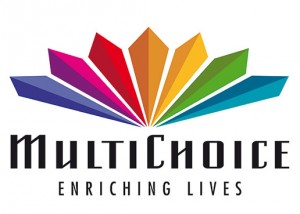 2.2.1 The Nigerian challenge: Subscriber exodusIn Nigeria, the primary challenge for MultiChoice was a severe and sustained loss of subscribers driven by affordability issues. The company’s financial year ending March 31, 2025, revealed a loss of 1.4 million subscribers in Nigeria over the preceding two years, a period that coincided with multiple price increases (Nairametrics, 2025b; BusinessDay, 2025d). This trend underscores the high price sensitivity of demand for a service perceived as a discretionary luxury. The financial impact was stark, with MultiChoice Nigeria’s subscription revenue plummeting by 44% in US dollar terms to $197.74 million (BusinessDay, 2025d; Punch, 2025b).
2.2.1 The Nigerian challenge: Subscriber exodusIn Nigeria, the primary challenge for MultiChoice was a severe and sustained loss of subscribers driven by affordability issues. The company’s financial year ending March 31, 2025, revealed a loss of 1.4 million subscribers in Nigeria over the preceding two years, a period that coincided with multiple price increases (Nairametrics, 2025b; BusinessDay, 2025d). This trend underscores the high price sensitivity of demand for a service perceived as a discretionary luxury. The financial impact was stark, with MultiChoice Nigeria’s subscription revenue plummeting by 44% in US dollar terms to $197.74 million (BusinessDay, 2025d; Punch, 2025b).
2.2.2 The Ghanaian challenge: Regulatory revolt
If Nigeria showed the peril of a weak economy, Ghana demonstrated the danger of a strong one. As the Ghanaian cedi appreciated, MultiChoice’s existing pricing structure became glaringly misaligned with the new economic reality. This created a significant political and consumer backlash, culminating in a direct confrontation with the government (TechAfrica News, 2025b; MyJoyOnline.com, 2025). The crux of the dispute was the enormous price disparity for identical content, with the DStv Premium bouquet costing the equivalent of $83 in Ghana, nearly three times the $29 charged in Nigeria (Nairametrics, 2025a; Citi Newsroom, 2025). The Ghanaian government demanded a 30% price reduction, threatening to suspend MultiChoice’s broadcasting license if it did not comply (Africa Business Insider, 2025a). This standoff trapped MultiChoice, revealing its business model’s crisis: it was losing subscribers in a weak economy and facing regulatory revolt in a strong one—a clear sign of its struggle to adapt to the diverse economic conditions across Africa.
3.0 Financial services sector analysis: The Pan-African banking perspective
The financial services sector in H1 2025 provided a compelling case study in how banking institutions can navigate and capitalize on the very macroeconomic policies designed to enforce stability. As central banks in both Nigeria and Ghana maintained tight monetary conditions, pan-African banking groups were uniquely positioned to benefit.
3.1 Ecobank Transnational Incorporated (ETI): Thriving in a high-rate environment
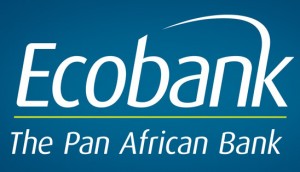 Ecobank Group delivered a powerful financial performance, demonstrating the earnings potential of its diversified pan-African footprint. The group’s profit before tax surged by a remarkable 40% to ?620.2 billion (Proshare, 2025b; TechEconomy.ng, 2025a). The primary engine of this profitability was the group’s core banking operations, which benefited directly from the high-interest-rate regimes in key markets like Nigeria. Net interest income climbed 27% to ?971.7 billion, a direct consequence of policies that allowed banks to reprice their loans at higher yields (Proshare, 2025b; Punch, 2025c).
Ecobank Group delivered a powerful financial performance, demonstrating the earnings potential of its diversified pan-African footprint. The group’s profit before tax surged by a remarkable 40% to ?620.2 billion (Proshare, 2025b; TechEconomy.ng, 2025a). The primary engine of this profitability was the group’s core banking operations, which benefited directly from the high-interest-rate regimes in key markets like Nigeria. Net interest income climbed 27% to ?971.7 billion, a direct consequence of policies that allowed banks to reprice their loans at higher yields (Proshare, 2025b; Punch, 2025c).
This robust revenue generation was reflected in the expansion of the bank’s balance sheet, with total assets growing by 13% to ?49 trillion, supported by a 16% increase in customer deposits to ?36.6 trillion (TechEconomy.ng, 2025a; DabaFinance, 2025). However, the impressive profit figures were accompanied by a significant note of caution. The same high-interest-rate environment that bolstered the bank’s income also placed considerable strain on its borrowers. This was evident in the sharp 40% rise in impairment charges—money set aside for potential loan losses—to ?264 billion (Punch, 2025c). This substantial increase suggests a deterioration in the quality of the bank’s loan book. The very policy that fueled the bank’s income simultaneously undermined the ability of its customers to repay their debts, highlighting that the impressive profitability of the banking sector was not without its risks.
4.0 FMCG sector analysis: Resilience amidst consumer strain
The Fast-Moving Consumer Goods (FMCG) sector, often a reliable barometer of household economic health, presented a narrative of sharp recovery and underlying resilience in H1 2025. For multinational players like Nestlé, the period was a tale of two distinct turnarounds: a financial recovery in Nigeria and a more organic, consumer-led recovery in Ghana.
4.1 Nestlé: A story of recovery and resilience
4.1.1 Nestlé Nigeria: The FX-driven rebound
Nestlé Nigeria staged one of the most dramatic corporate turnarounds of H1 2025. The company reported a profit before tax of ?88.4 billion, a stunning reversal from the ?252.5 billion loss it had posted in the same period of 2024 (Guardian Nigeria, 2025; TechEconomy.ng, 2025b). This swing was not driven by a fundamental change in its business operations but by the newfound stability of the foreign exchange market. The key to this recovery was the dramatic reduction in finance costs related to foreign currency liabilities, which plummeted from ?318.1 billion in H1 2024 to just ?43.2 billion in H1 2025 (TechEconomy.ng, 2025b).
This macroeconomic relief allowed the underlying strength of Nestlé’s brand portfolio to shine through. Revenue grew by a very strong 43% to ?581.1 billion, demonstrating the company’s significant pricing power and the enduring demand for its products (Nestlé Nigeria Plc, 2025; Guardian Nigeria, 2025). The H1 2025 results were a clear demonstration of a powerful operational engine that had been temporarily stalled by an external macroeconomic shock. With that shock removed, the engine roared back to life.
4.1.2 Nestlé Ghana: The consumer-led recovery
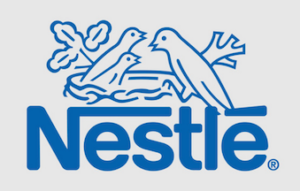 While specific H1 2025 financial statements for Nestlé Ghana were not available, its performance can be reliably inferred from overwhelmingly positive macroeconomic and sector-specific data. The operating environment in Ghana was exceptionally favourable for an FMCG leader. The rapid decline in inflation, strengthening of the cedi, and subsequent recovery in consumer purchasing power created the ideal conditions for a shift from price-led growth to more sustainable volume-led growth (Graphic Online, 2025; Fitch Solutions, 2025a).
While specific H1 2025 financial statements for Nestlé Ghana were not available, its performance can be reliably inferred from overwhelmingly positive macroeconomic and sector-specific data. The operating environment in Ghana was exceptionally favourable for an FMCG leader. The rapid decline in inflation, strengthening of the cedi, and subsequent recovery in consumer purchasing power created the ideal conditions for a shift from price-led growth to more sustainable volume-led growth (Graphic Online, 2025; Fitch Solutions, 2025a).
Market-wide data for the Ghanaian FMCG sector confirms this trend, showing a healthy 12.5% increase in consumption volume during H1 2025, with food products accounting for over 75% of this increase (Graphic Online, 2025). This indicates that consumers were not only spending more but were actively buying more units—a clear sign of returning confidence. Unlike in Nigeria, where the story was about a financial rebound from currency losses, the story for Nestlé Ghana was one of a real, organic recovery in its core business, driven by the improving economic health of its customers.
5.0 Synthesis and strategic outlook
The first half of 2025 served as a critical stress test for corporate strategy in West Africa, revealing with stark clarity the profound influence of divergent macroeconomic policies on business performance. The analysis of MTN, MultiChoice, Ecobank, and Nestlé across Nigeria and Ghana provides a multi-faceted view of resilience, adaptation, and structural vulnerability. Synthesizing these individual corporate stories reveals overarching themes that define the current strategic landscape and offer a forward-looking perspective.
5.1 Overarching strategic insights
Macro is king: The Primacy of the Economic Environment. The single most dominant factor determining corporate success was the macroeconomic landscape. The turnarounds of MTN and Nestlé in Nigeria were almost entirely attributable to the stabilization of the Naira. This demonstrates that for multinationals in Nigeria, macroeconomic stability can create or destroy hundreds of billions of Naira in shareholder value, dwarfing the impact of most operational initiatives.
The Digital vs. Traditional Divide. The period highlighted an accelerating divergence between digital-native business models and traditional ones. MTN’s services—data connectivity and digital finance—are increasingly viewed as essential utilities, enabling them to thrive. In contrast, MultiChoice’s traditional linear pay-TV model is proving to be a discretionary luxury with high price sensitivity. As consumers face financial pressure, they are cutting traditional media subscriptions while likely increasing their reliance on mobile data to access cheaper, alternative entertainment.
The price of stability: Divergent Regulatory Pressures. The differing quality of economic stability in Nigeria and Ghana created opposing regulatory dynamics. In Nigeria, the government’s concern for corporate survival led to a relatively pro-business stance, such as approving tariff hikes for telecommunication companies (MTN Group, 2025a). In Ghana, economic success empowered the government to pivot to a pro-consumer agenda, demanding price cuts from MultiChoice (Africa Business Insider, 2025a). This shows that the regulatory environment is not static but dynamically shifts with the macroeconomic health of the host country.
Operational Efficiency as the Ultimate Differentiator. The performance of MTN Ghana, which generated higher absolute profits than its Nigerian counterpart despite being a fraction of its size, is a watershed moment. It proves that in the volatile context of African markets, operational excellence can be a more potent driver of value than sheer market scale (Techpoint Africa, 2025a; Techloy, 2025). Ghana’s superior EBITDA margin reflects a leaner cost base and a more effective strategy for extracting value from each subscriber.
5.2 Forward-looking analysis
Assuming continued macroeconomic stability in both countries, the positive trends for MTN, Ecobank, and the Nigerian FMCG sector are expected to persist. MTN Nigeria has upgraded its full-year guidance, anticipating service revenue growth of “at least low-50%” (Investing.com, 2025a). The critical variable remains MultiChoice, which faces an inflection point. The resolution of its regulatory standoff in Ghana will have significant implications for its operations there and potentially set a precedent for other markets. For all entities, the key takeaway is clear: success in West Africa requires not only a robust operational strategy but also a deep, adaptive understanding of the powerful macroeconomic and regulatory currents that shape these dynamic markets.
By Sitsofe Mensah
References
Africa Business Insider. (2025a, August 5). Ghana orders DStv to cut subscription prices or face licence suspension.
Agusto & Co. (2025, July 29). Nigeria’s economic ledger: Mid-year insight & strategy.
BusinessDay. (2025a, August 1). Why MPC may not ease rates in H2.
BusinessDay. (2025b, March 1). Why weak consumer spending will likely persist in 2025.
BusinessDay. (2025c, July 28). MTN Nigeria’s net income grows 180%, hits N414.9bn in H1 2025.
BusinessDay. (2025d, June 12). MultiChoice Nigeria’s subscription revenue drops 44% to $197m as customer base shrinks.
Channels Television. (2025, July 28). MTN Nigeria reports N414.9bn profit in H1 2025 [Video]. YouTube.
Citi Newsroom. (2025, August 1). Sam George highlights DSTV price disparities across Africa.
DabaFinance. (2025, July 29). Ecobank Group reports 46% jump in Q2 pre-tax profit.
Fitch Solutions. (2025a, February 20). Ghana 2025 consumer outlook: Growth moves up as stronger tailwinds emerge.
FocusEconomics. (2025a, June 17). Ghana national accounts: GDP growth improves in Q1.
Ghana Association of Banks. (2025). The GAB 2025 industry outlook.
Ghana News Agency. (2025, July 2). Inflation drops to 13.7% in June, lowest since Dec. 2021. GNA.
Graphic Online. (2025, July 15). Ghana’s FMCG sector recovery: 2025 mid-year review.
Guardian Nigeria. (2025, July 31). FMCG sector reaps FX stability gains, achieves impressive profit in H1.
Investing.com. (2025a, August 4). MTN Nigeria H1 2025 presentation: Service revenue surges 54.6%, EBITDA more than doubles.
MTN Group. (2025a, May 12). Quarterly update for the period ended 31 March 2025.
MTN Nigeria Communications Plc. (2025a, July 29). Financial results for the half year ended 30 June 2025.
MyJoyOnline.com. (2025, August 3). Perception as a strategic asset: How DStv can turn perception hurdles into opportunities.
Nairametrics. (2025a, August 4). Ghana orders MultiChoice to cut DStv subscription fees by 30% or face license suspension.
Nairametrics. (2025b, June 12). Multichoice Nigeria loses 1.4 million subscribers in two years amid DStv price increments.
Nestlé Nigeria Plc. (2025, July 29). Press release on half year 2025 results of Nestlé Nigeria.
Proshare. (2025a, February 19). Q1 2025 monetary policy and inflation rebasing, the Central Bank’s next likely move.
Proshare. (2025b, July 29). Ecobank Group H1 2025 result: Pan-regional growth pulls PBT up by 39.85%.
Punch. (2025a, August 4). MTN, Airtel users spent N2.5tn on calls, data in six months – report.
Punch. (2025b, June 12). MultiChoice Nigeria revenue falls 44% on customer loss.
Punch. (2025c, July 30). Ecobank sees 40% growth in PBT to N620bn.
Storyblok. (2025, March 21). Financial losses in Nigeria’s FMCG sector: Causes and implications.
TechAfrica News. (2025a, August 1). MTN Ghana’s H1 profit jumps 56% on back of data and fintech expansion.
TechAfrica News. (2025b, August 4). MultiChoice defends DStv pricing in Ghana, minister calls for reduction.
TechEconomy.ng. (2025a, July 29). Ecobank reports strong H1 2025 results with ?433.9bn profit.
TechEconomy.ng. (2025b, July 30). Nestle returns to profitability with N50.5 billion after-tax profit in H1 2025.
Techloy. (2025, August 5). Why MTN Ghana’s profit surpassed MTN Nigeria’s in H1 2025.
Techpoint Africa. (2025a, August 4). MTN Ghana profit surpasses Nigeria’s by $56 million.
The Labari Journal. (2025, August 3). MTN Ghana profits surge to record GH¢3.6 billion in first half of 2025.
Trading Economics. (2025a). Nigeria interest rate. Retrieved August 5, 2025
Trading Economics. (2025b). Nigeria inflation rate. Retrieved August 5, 2025
The post West African titans: A comparative H1 2025 performance analysis of key companies in Nigeria and Ghana appeared first on Ghana Business News.
Read Full Story






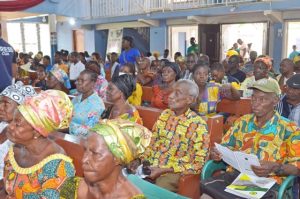













Facebook
Twitter
Pinterest
Instagram
Google+
YouTube
LinkedIn
RSS